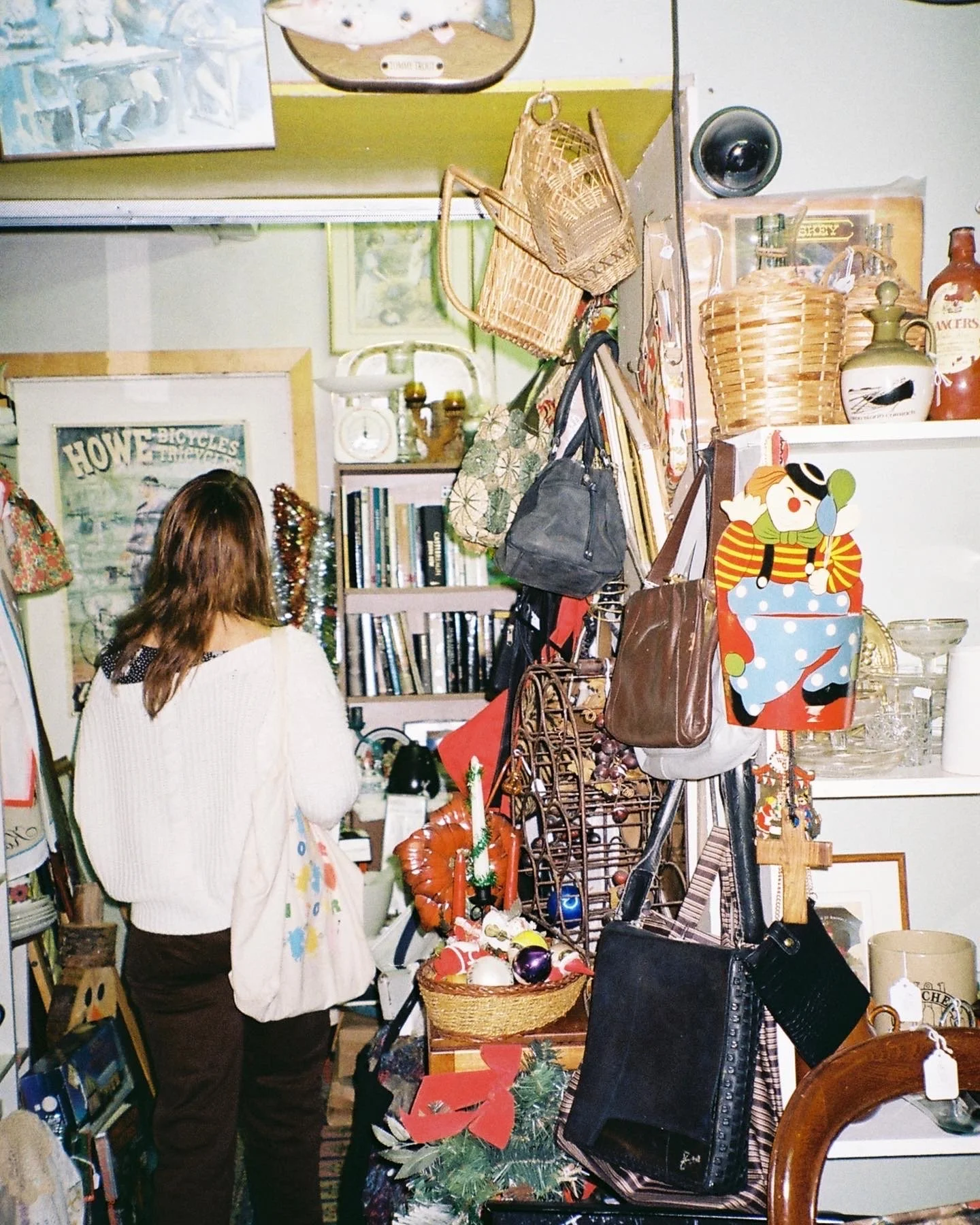A guide to navigating Irish charity shops
By Susie Clarke
Photography by Elizabeth Hunt
Irish charity shops; a treasure trove for those of us brave enough to scavenge through the depths of 1970s crockery and the never ending supply of Irish farmer’s shirts (mothballs included); what lies beneath serves as a shiny reward for the weary explorer.
Making the brave decision to establish the initial shift in your shopping habits can be unsurprisingly confronting for anyone. Let's be honest, the options for a sustainable wardrobe that's on trend and student budget friendly is enough to make even the most experienced of shoppers lose hope. Navigating the Irish sustainability market usually goes two ways; either spending your weekly wage on the extortionate prices of everything on Depop or exploring the humble local charity shop.
The initial proposal to explore charity shops has a certain novelty to it, one that can build a superiority complex, especially when asked about where you got your newest find. Although the reality is seldom that sweet, it can be daunting trying to navigate this new physical arrangement of shops - unlike online shopping or many high street shops - there's probably no visual merchandiser in your local Oxfam or an exhibit showcasing the flashy new trends nor is everything laid out neatly in labelled sections. Charity shopping is an experience in itself, which builds humility - making it all the more rewarding when you do find a hidden gem. It isn't easy, but it's worth it in the end – saving yourself some money and in turn doing your bit to help the planet out. Hopefully these tips help you along the way; be it a charity shop veteran or a sustainability newbie - everyone can take something from it!
Tips
Become a regular
If you take anything from this piece let it be this; going to a charity shop regularly is the key to finding the best bits. It makes sense, you are more likely to find the good stuff when you keep coming back after they put out the new stuff before the place has been rummaged through and left out to dry. I now know my local charity shopkeepers on a first name basis which in itself has its many benefits, they keep things behind the counter for me they think I would love or will willingly search in the backroom whenever I ask for their newest stock, angels I know. By visiting regularly, you too can reap the rewards.
2. Nightwear and jewellery section
Guilty of it myself - these sections often go neglected or skimmed past, but I've found most of my prized possessions in these sections. For the nightwear section think night out attire - I've found countless slip dresses and corsets perfect for your next night out. As for the jewellery section, these are often hidden away and untouched (again becoming friends with the shopkeeper will help you in the long run when they can guide you to the newest jewellery section). These can be well worth a few euros, as more often than not they are high quality pieces that won't tarnish after a few wears.
3. Don't scan - scavenge
I've learned this tip the hard way: when shopping with friends I have often had the impression that the shop did not offer much only to then turn to my friend who has found exactly what I was searching for. This wasn't by magic, just by being more patient and by putting in more effort to sift through each and every item on the rails. In other terms, mindlessly visually scanning the rails isn't going to get you far in most charity shops.
4. Not what charity shop but where
It's not so much which chain of charity shops to visit (such as Vincents or NCBI) but the location in which you'll reap the most rewards.
Some tips I have regarding location include:
Avoiding main streets or busy city centres - these have much more traffic bustling in and out and the odds of finding something good for a low price are like striking a pot of gold.
Often suburbs and backstreets are where I've found the best things - hidden gems where the clientele are usually older and have opposing taste to me, so all the good stuff is left up for grabs.
The higher the income in the area, the more designer/branded items there will be. Although I said that the dodgier, the better with charity shops, this is an exception to the rule if you're on the hunt for good quality pieces or designer labels.
These are the top tips that came to mind, hopefully they make the task less daunting and if you’re reading this you've made the first step in becoming a more sustainable shopper! Best of luck and happy shopping! :)



